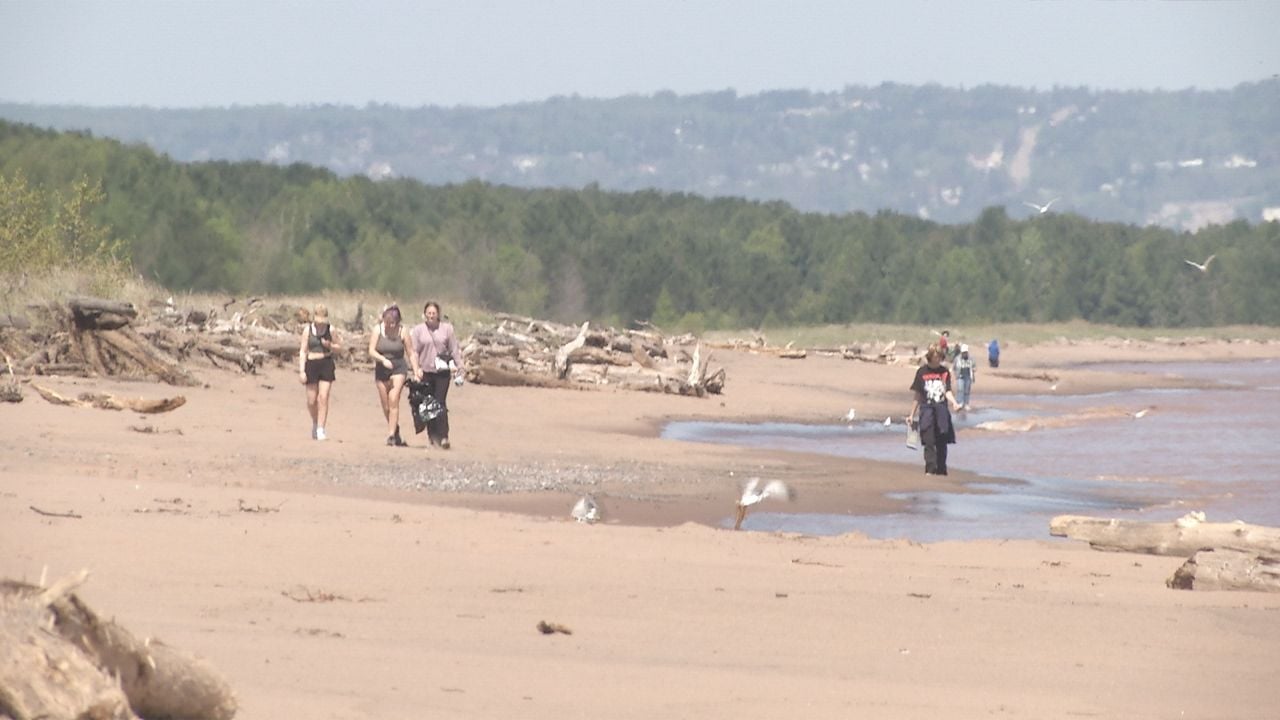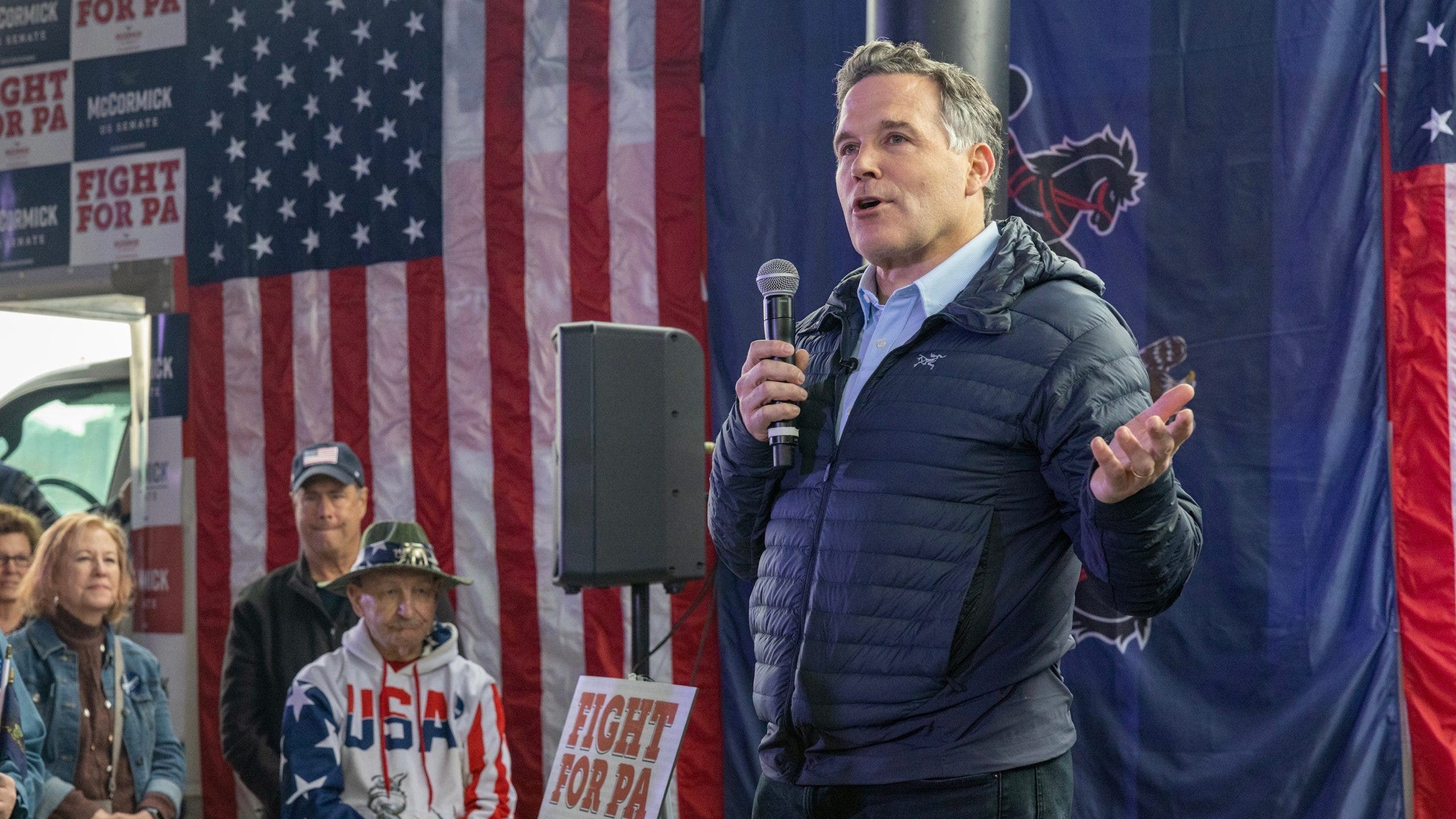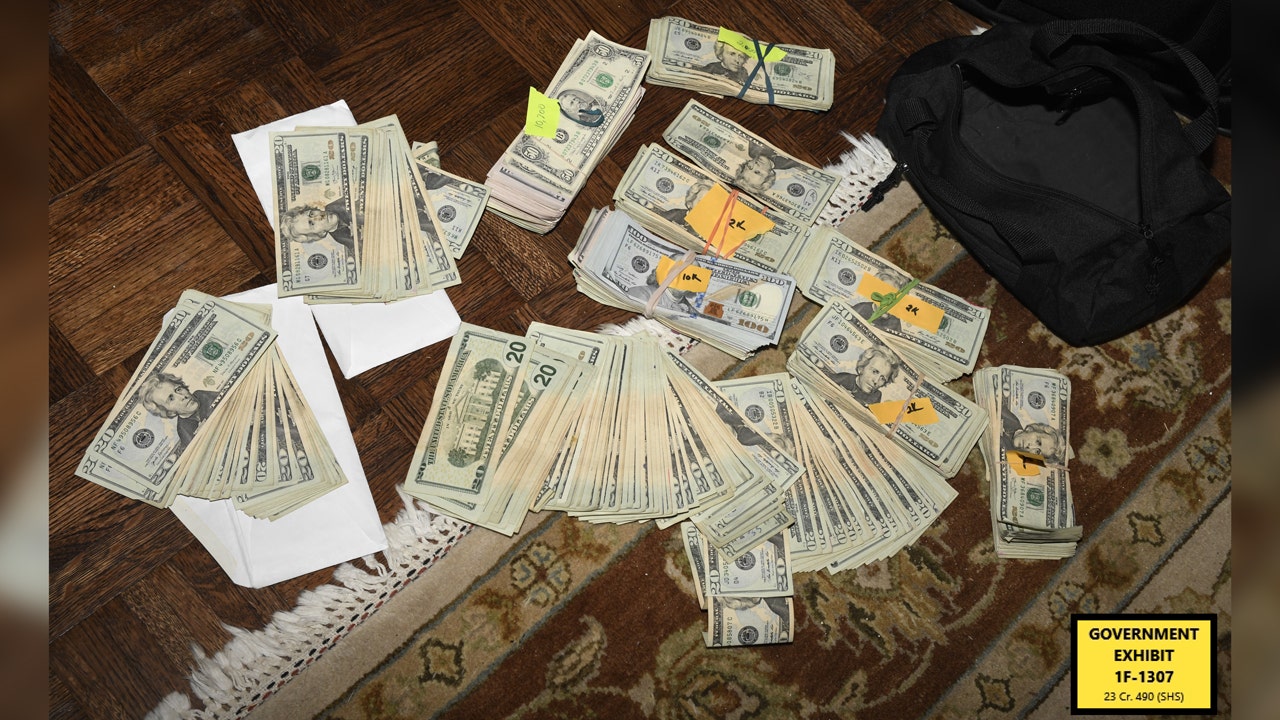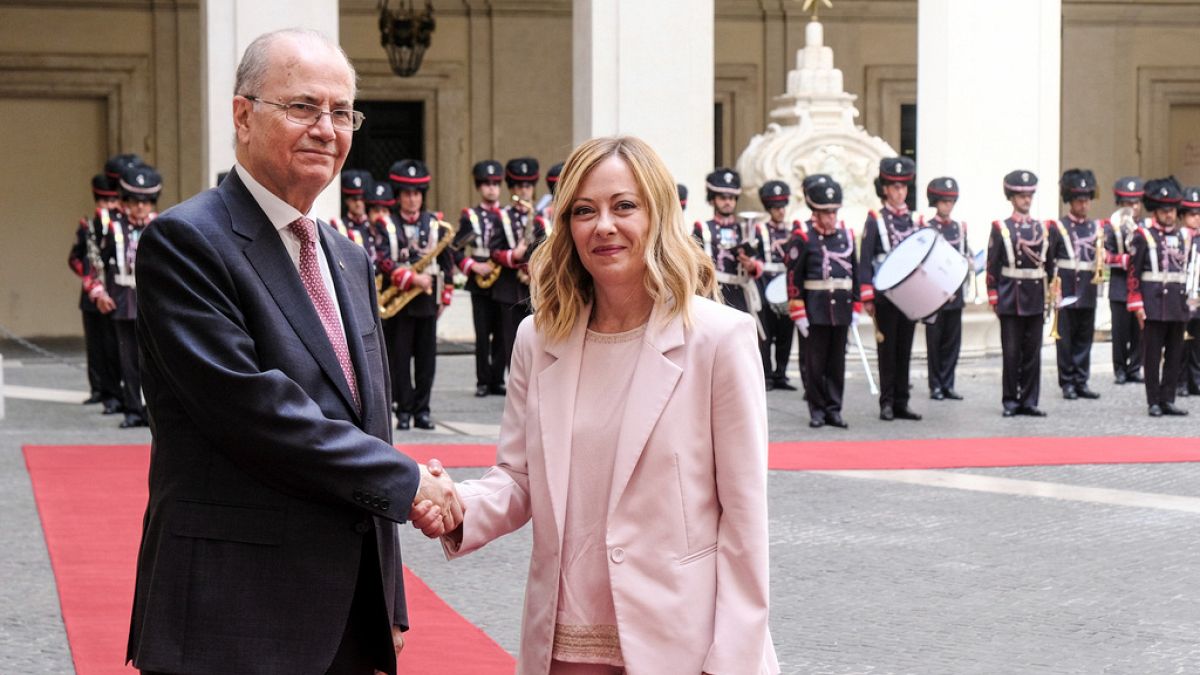Lifestyle
Beyond Erewhon: Inside the L.A. grocery store where all the cool vegans are flocking
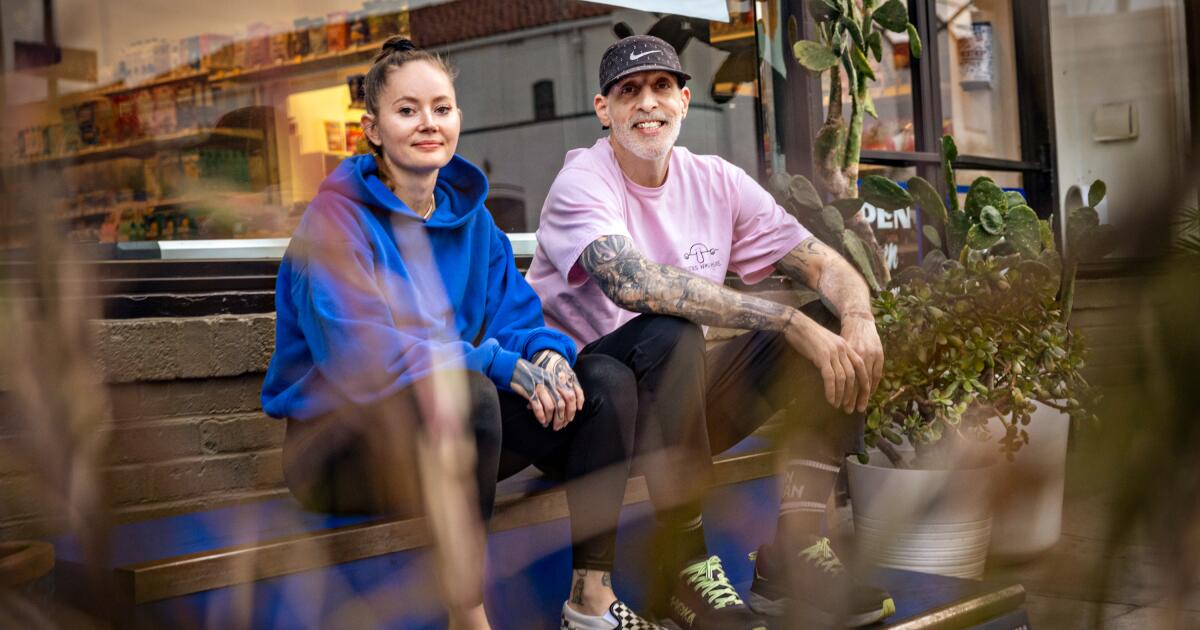
On a rainy Saturday afternoon in late March, a block of East Hollywood is unusually quiet but for the corner of Fountain Avenue and North Edgemont Street. There, a line snakes halfway around the perimeter of a little vegan grocery store that’s sparking with activity.
Inside, grime music blasts as a pop-up vendor doles out vegan banh mi to shoppers who clutch bamboo toilet paper and vegan lox. Even a Siberian husky named Chaka gets in on the action, scarfing up a vegan dog treat — every canine who comes through the door gets one.
“Welcome!” yells Matt Fontana, the store’s tattoo-sleeved co-founder.
The Besties store after its run club event, which always ends with free soft serve for all.
(Jason Armond / Los Angeles Times)
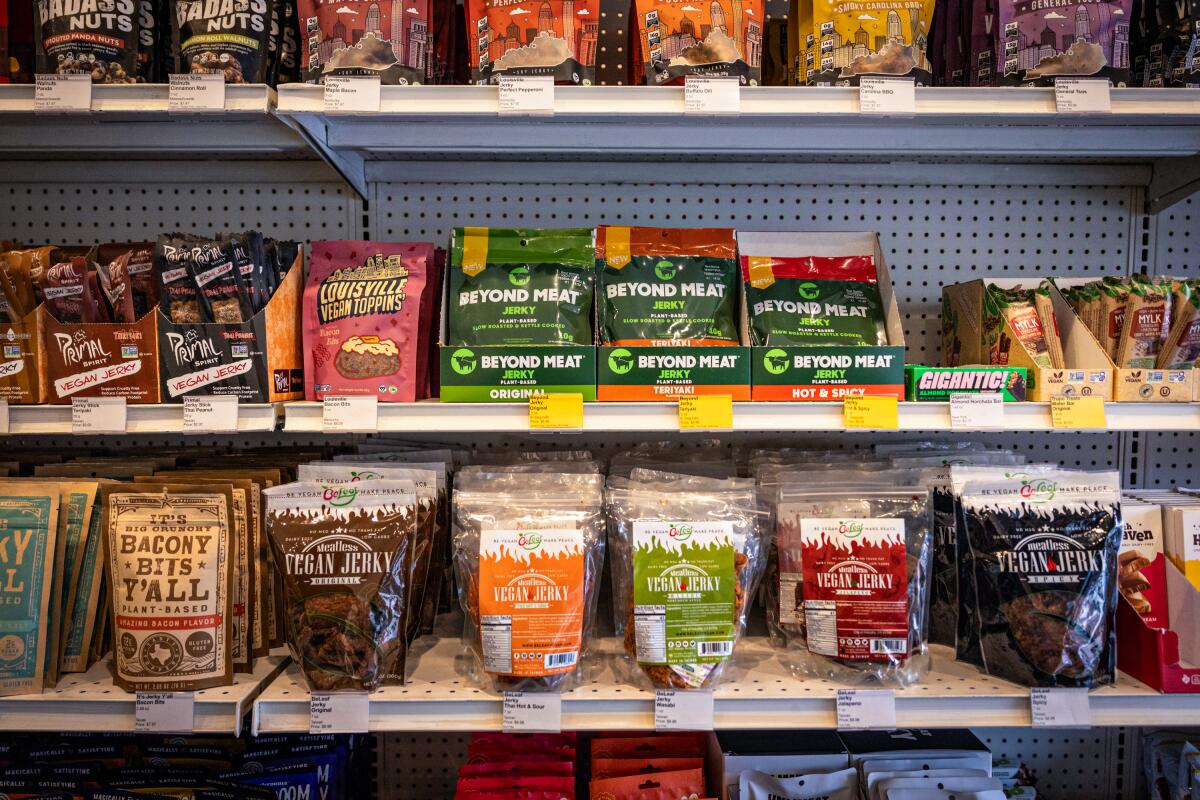
Besties sells a wide array of vegan jerky.
(Jason Armond / Los Angeles Times)
“Hey Paul, hi!” Fontana bellows in his New York accent, while filling a cup with the store’s vegan soft serve ice cream for another customer. Then, waving his free arm: “Everyone, you guys — come on in!”
It’s a typical day at Besties Vegan Paradise. Since opening in 2019, the grocery store has become a hub for a particular type of cool vegan in Los Angeles. The clientele is culturally diverse, spanning age, gender and style. But it coalesces around especially trendy aesthetics and a staunch desire to live responsibly.
Environmentally conscious, animal-loving DJs, chefs, writers, filmmakers, graphic designers and other creatives mingle there over free natural wine and vegan Brie during a “meet the maker” session, showcasing how the store’s cheese is made. “Open forum” talks there address topics such as environmental sustainability and the food chain. As you grab a beverage out of the cooler, hand-painted lettering above proclaims you’re “So Cool You Hot.”
There are other vegan markets in L.A. — X Market in Venice and Glowing Plant Based Eatery & Market in Echo Park, among them. But Besties is the only one that sources 100% of its products from all-vegan manufacturers so that customers don’t have to scrutinize labels. And while the store’s purpose is utilitarian, Besties is as much about the vibes — the shopping experience and connections made while there — as it is about picking up a fresh bottle of plant milk for your morning cereal. Customers trade tips about vegan tattoo ink during Wu-Tang Wednesdays, which Besties observes with religious fervor. (Every Wednesday, Wu-Tang Clan’s hip-hop plays loudly and on repeat in the store from opening until closing.) Over the last five years, the establishment has grown beyond the parameters of a retail store and into a cultural center for vegans in L.A. focused on food, fashion, art and athleticism.
Fontana, who sports a shaved head and a gold tooth, and co-owner Asia Rain, a vegan tattoo artist whose studio is above the store, host these in-person events at Besties to give like-minded customers a space to socialize and vegan-curious newcomers a place to learn about the diet. Pop-ups supporting local vegan brands, such as Tiffany Luong’s Long Beach-based Vegan Bánh Mì Thảo, are a regular occurrence. Besties makes its own chocolate, candies and cheese — “celebratory foods people are emotionally attached to,” Fontana said. Rain also designs a line of street-inspired branded hoodies, T-shirts and socks that come in handy at the store’s popular weekly, vegan 5K run club that ends at Besties with free soft serve for all.
“Veganism isn’t a diet, it’s a lifestyle and a mind-set,” Fontana said. “It’s an act of love.”
Veganism has come a long way from the days of limp soy hot dogs. In 1971, author Frances Moore Lappé published “Diet for a Small Planet,” a seminal guide that argued Americans’ insatiable appetite for meat was damaging Earth — and our bodies. Soon after, meatless diets gained popularity among a small percentage of Americans. But it wasn’t until the early 1980s that soy became a more common replacement for animal-based proteins such as meat and dairy, standing in for burgers, ice cream and other American comfort foods. Restaurants and grocery stores now offer shockingly sophisticated and culturally diverse items. But veganism still suffers from something of a branding issue: It’s often seen as an exclusive, hippie-ish club of well-meaning but judgy disciples, with restrictive diets, who can afford $42 artisanal vegan salami. “People ask me if I miss meat or dairy,” Julio Torres says while discussing his veganism in a 2017 Comedy Central stand-up show. “I mean, I miss being liked.”
Part of Besties’ mission is rebranding veganism as something that’s diverse, inclusive and, yes, even hip.
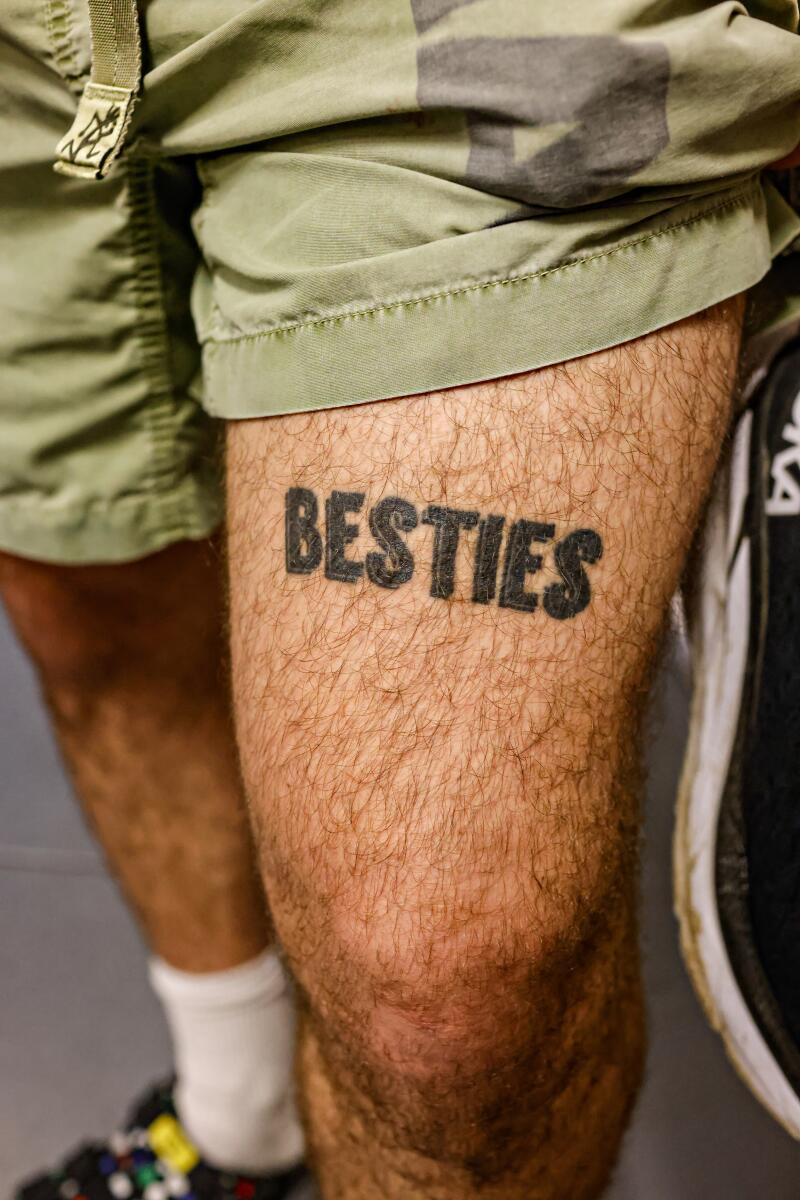
A patron shows off a “Besties” thigh tattoo from Asia Rain. (Jason Armond / Los Angeles Times)
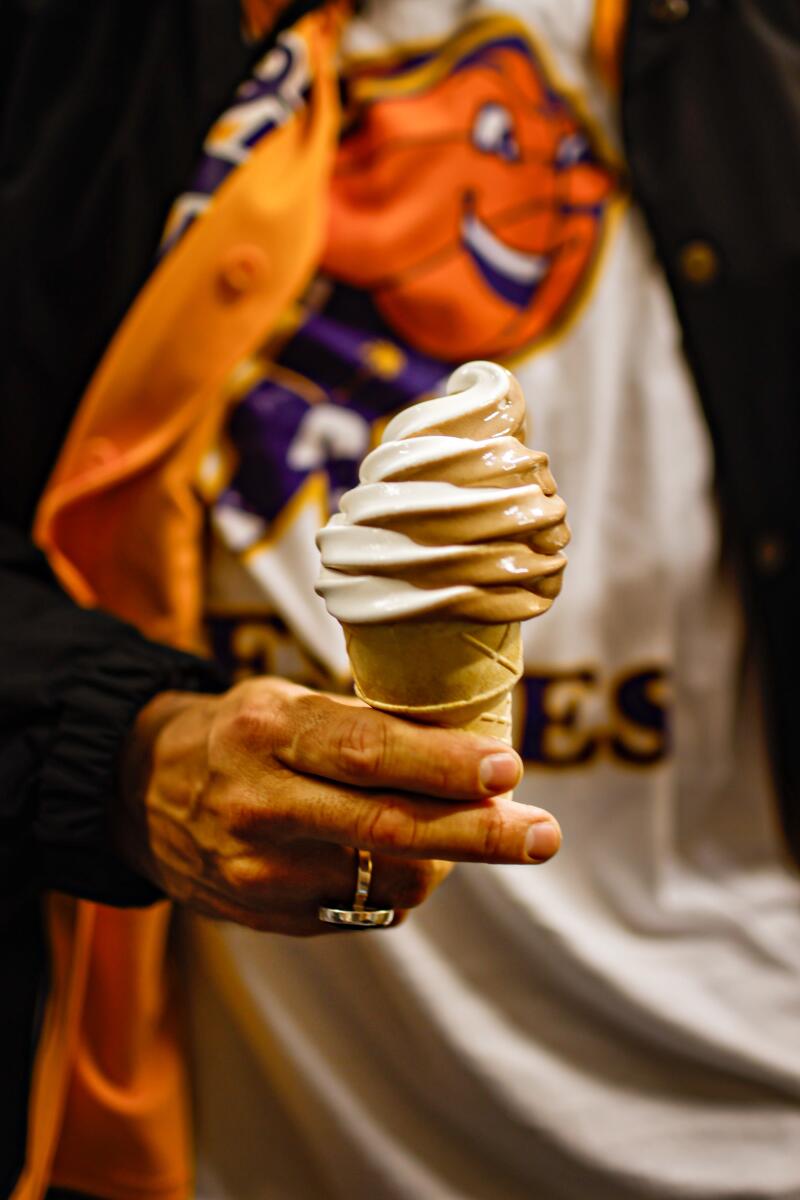
Cesar Asebedo enjoys a vegan ice cream cone. (Jason Armond / Los Angeles Times)

The Vegan Run Club in action.
(Jason Armond / Los Angeles Times)
“It’s for everyone: goths, punk rockers, hippies, bike messengers, basics,” Fontana said. “Hip-hop heads and normcore hikers and campers. Veganism is small, but it crosses all identities. It’s for anyone who truly champions equality, who realizes they have a chance to make a difference in real time.”
The charge Fontana is leading has been shared by a handful of other vegan outposts in the U.S., according to Alicia Kennedy, author of 2023’s “No Meat Required: The Cultural History and Culinary Future of Plant-Based Eating.” She notes food destinations with similar “hip, young, vegan identities,” such as Williamsburg’s Foodswings (which closed in 2014), the Chicago Diner and Philadelphia’s Grindcore House.
Collectively, these spaces are valuable, she says, because vegans, historically, have always been far more diverse than the dominant cultural stereotype: “This white, crunchy, kind of angry activist vibe,” Kennedy said. “Has it changed? Not really. So anything that pushes back against that is going to help change the mainstream perspective.”
On a recent Friday night, Besties hosted a lively vegan Mexican street food event, featuring Jessie Gil’s Sylmar-based pop-up El Compa Vegano, that drew more than 150 people over four hours. Straight-edge 20-somethings, with nose rings and decorative tooth gems, mingled with middle-aged “basics” in jeans and unisex button-down shirts outside the store. Carne asada, with impeccably seasoned lion’s mane mushrooms standing in for steak, sizzled on the grill as plumes of smoke filled the air. Some customers sat on a custom skateboard obstacle that doubles as a Brooklyn-style “stoop” outside Besties’ front door. (The shop lends it to local skater kids.) Hand-painted signs designed by Rain hung in the window, advertising “Classic Hot Dog $6.96” and “Oat Based Soft Serve” in the style of a 1950s soda fountain. It was a mashup of crowds from the Venice Beach Skatepark, the KITH streetwear store in Beverly Hills and the Smorgasburg food market.
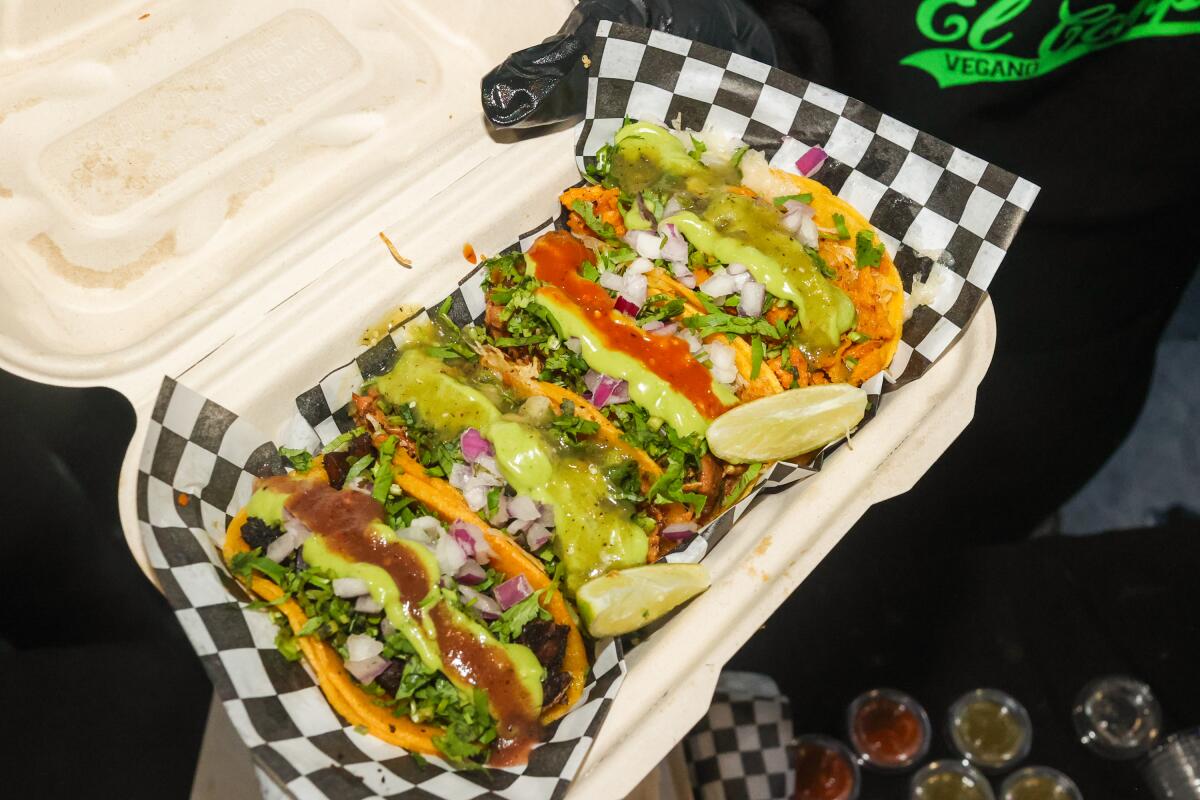
Vegan carne asada, carnitas, al pastor and pollo tacos from El Compa Vegano.
(Michael Blackshire / Los Angeles Times)
“The reason this place feels so authentic is because they’re making healthy choices for themselves — they’re walking the walk — but they’re cool kids too, and that makes it realistic. You can do it too,” said Besties customer D’Andrée Galipeau, a DJ who lives nearby and “leans vegan.”
Fontana, 48, grew up in a Sicilian-American family in Brooklyn in the 1970s and ’80s immersed in the hip-hop culture of the time. “Anything anti-establishment,” he says. He collected basketball sneakers and tattoos, and carried his skateboard everywhere. His mother was a vegetarian and he, an animal lover, followed suit at 14. He turned vegan at 20 when — while studying eastern philosophy and religion at San Francisco State University — he met his now ex-wife and she taught him about the diet.
“I hadn’t seen behind the veil,” he said. “I didn’t know about the industrialized animal agriculture industry, the enslavement of millions of female animals across the world,” the latter referring to the dairy industry. “Once all of that got explained to me, it was an obvious choice as somebody who rejects violence, rejects oppression and is a champion of reproductive freedom.”
Fontana went on to become an influential streetwear, sneaker and hip-hop fashion entrepreneur in the early to mid-2000s on the Lower East Side of Manhattan.
The cultural influences of his past are apparent at Besties. The store creates “limited-edition” soft serve flavors to match its calendar of food pop-ups. The Besties hot dogs pay homage to the Coney Island of Fontana’s youth, the soft serve to the Carvel ice cream he grew up with.
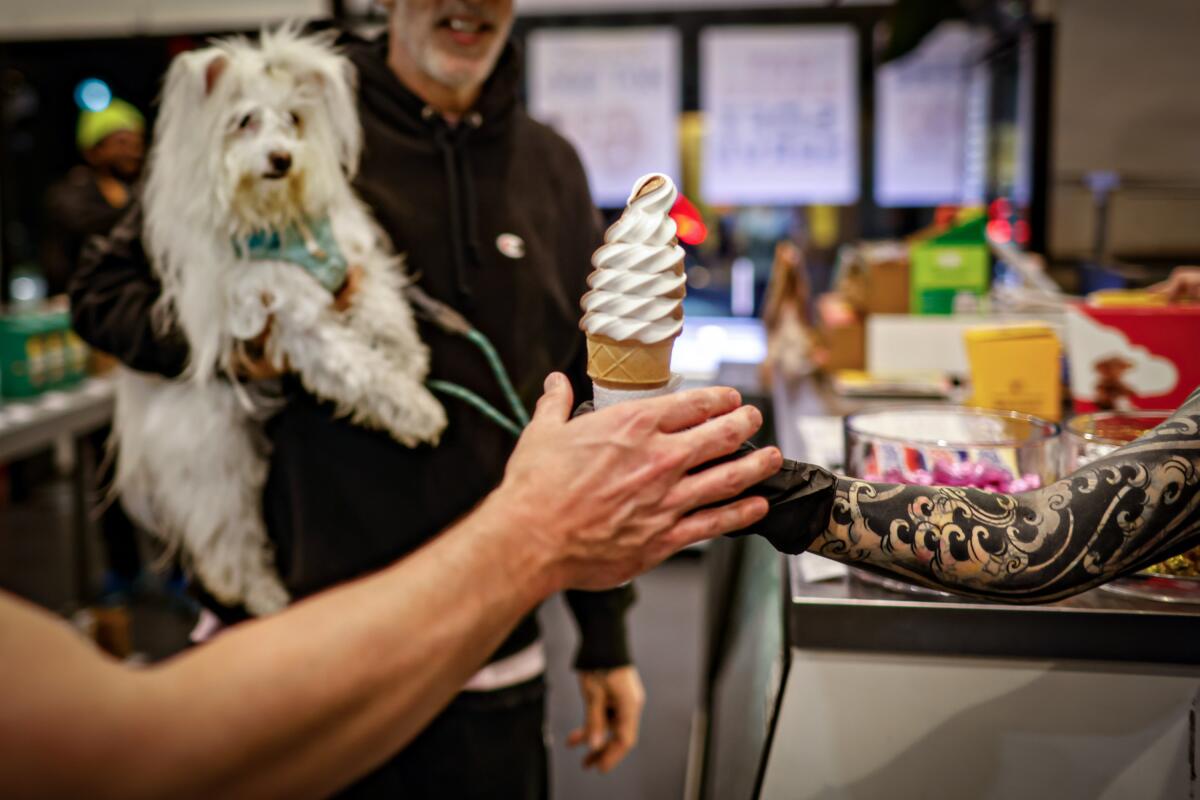
Asia Rain serves up vegan ice cream. Matt Fontana holds their Maltese mix, MacKenzie, in the background.
(Jason Armond / Los Angeles Times)
“It’s got to be lighthearted,” Fontana said of making veganism appealing. “We’re elevating veganism to be something that’s culturally aspirational as opposed to something that’s frowned upon by society.”
If Fontana is the mouthpiece of Besties, Rain, 34, is the artistic eye. She was born Asia Rain Phoenix (her last name is one her parents invented for their kids, and she goes by her first and middle name now). She spent her early years in Victoria, British Columbia, with parents who battled addictions, she says, and took odd jobs.
When Rain was 10, her parents moved her and her two younger siblings to Atlanta. They were undocumented immigrants, so when the kids got older, they couldn’t open a bank account, get a driver’s license or apply for financial scholarships.
Rain left home at 17 and spent a year traveling around the U.S. as a carnival barker (“Step right up!” she demonstrated) and airbrushing T-shirts at fairs and in malls. That led to work in an Indiana tattoo shop. She received her citizenship at 24, at which point she’d built a thriving clientele in the Midwest.
For the first time, she had a steady income. She bought a house with her partner, grew her own food, kept bees. But she felt stagnant and depressed. She gave it all up in 2016 and traveled to Peru, where she spent six months hiking and studying the culture, Spanish and the natural environment, including how to make tattoo ink from fruit.
When she returned to the U.S. in 2017, she met Fontana through a fine art tattooer. Through their conversations, Rain quickly decided to go vegan.
“Everywhere I looked it was … government manipulation and disrespect of natural resources,” she said. “And I felt powerless. Veganism is an act of choice to abstain from committing cruelty to anything. And that’s what I wanted to do.”
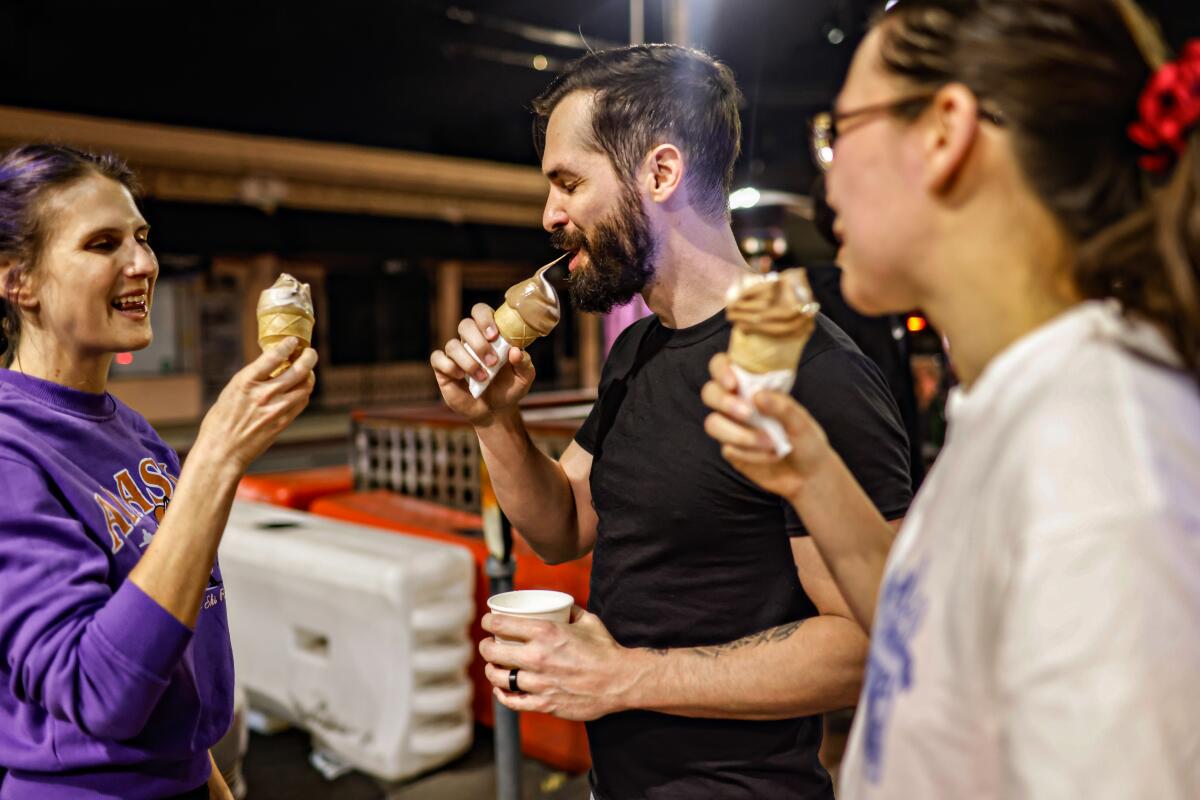
Ash Williams, left, Addison Blue and Nicolette Brannan enjoy free vegan soft serve after their weekly run.
(Jason Armond / Los Angeles Times)
While dating over the next year or so — he living in L.A. and she in Vancouver — Fontana shared multiple business plans with Rain, including one for a vegan 7-Eleven-type store. He invited her to be his partner. Then things progressed rapidly.
Fontana sold almost everything he owned, put the rest in storage and lived out of his car — a black Jaguar — for several months in late 2018. Rain sold her beloved, baby blue VW Westfalia and moved to L.A. They lived in an Airbnb while they remodeled a former mini-mart. In January 2019, they opened Besties, where she now tattoos many of the customers.
Rain came up with the name: “If we all treated each other like besties, the world wouldn’t be in the state that it’s in,” she said.
For both Rain and Fontana, cool cachet and social-environmental responsibility are not mutually exclusive. Besties might dress up the vegan lifestyle in trendy clothing and designer sneakers, but it still demands from them rigorous research, unwavering commitment, attention to detail and relentless principle.
“There’s Besties Vegan Paradise, the cultural center — and it says ‘All are welcome’ on the door,” Fontana said. “But personally, I’m a vegan activist. This place is my activism.”
Helping plant-based brands connect with customers is central to Besties’ mission. Most businesses charge pop-up vendors for space or take a percentage of their sales from events, Fontana said. Besties does neither.

Jessie Gil, founder of El Compa Vegano, holds vegan nachos, fully loaded. (Michael Blackshire / Los Angeles Times)
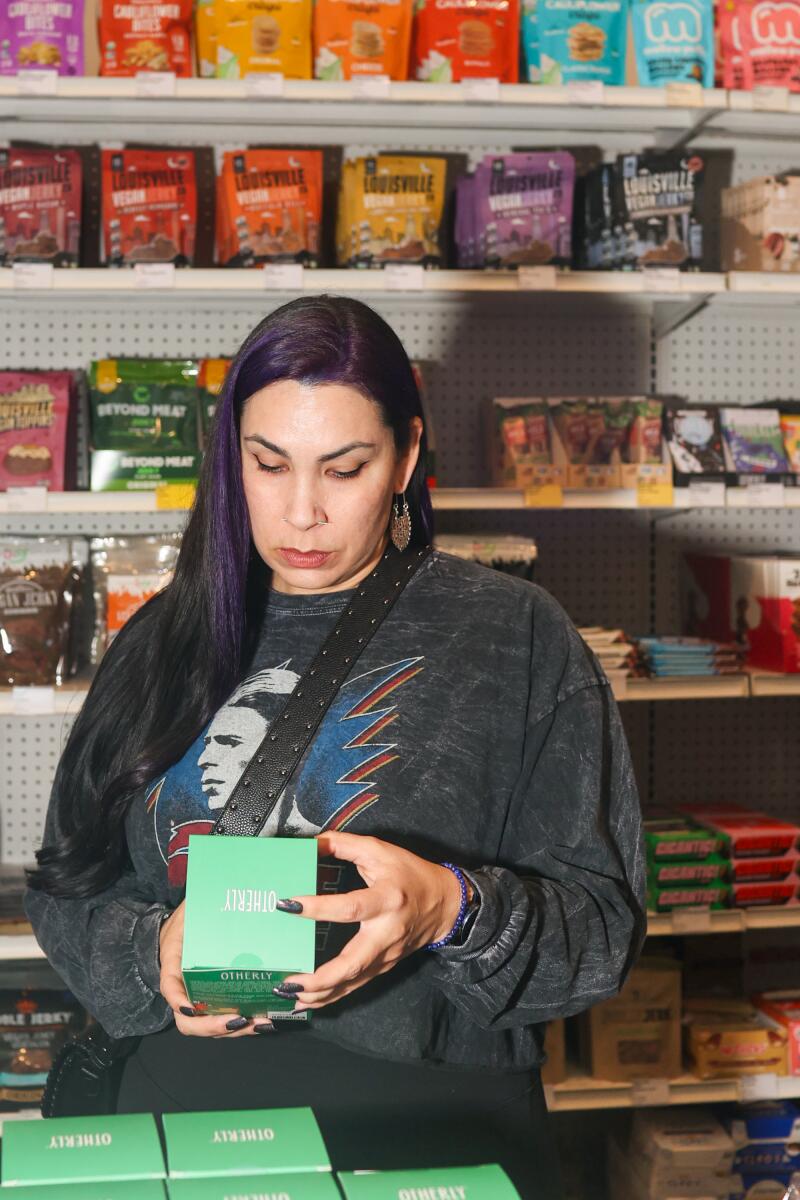
Julie Reyes shops for groceries at Besties Vegan Paradise. (Michael Blackshire / Los Angeles Times)
“They do a great job of marketing me in their newsletters and on social media,” Luong said of Besties during her bánh mì event (she’s done 10 there now). “I feel supported, I feel seen.”
What does Besties get out of giving away space and time for free?
“Traffic,” Fontana said. “These pop-ups have followings that they bring to us. But it’s also part of how we’re breaking down the stereotypes of veganism, that ‘not for you’ club. These vendors showcase what’s usually the food from their culture and they bring with them a totally different community than maybe we’re able to reach directly.”
Fontana said one family even comes in every Saturday from Aliso Viejo for the soft serve.
The secret recipe took about three years to perfect, as Fontana and Rain experimented with coconut milk and soy milk for its base. (It’s now made with oat milk.) Ultimately, it was Rain’s mechanical expertise that made the difference. She took apart Besties’ large Taylor soft serve machine and adjusted it to dispense nondairy milk. “Changing the viscosity changes how you experience the flavor,” she said.
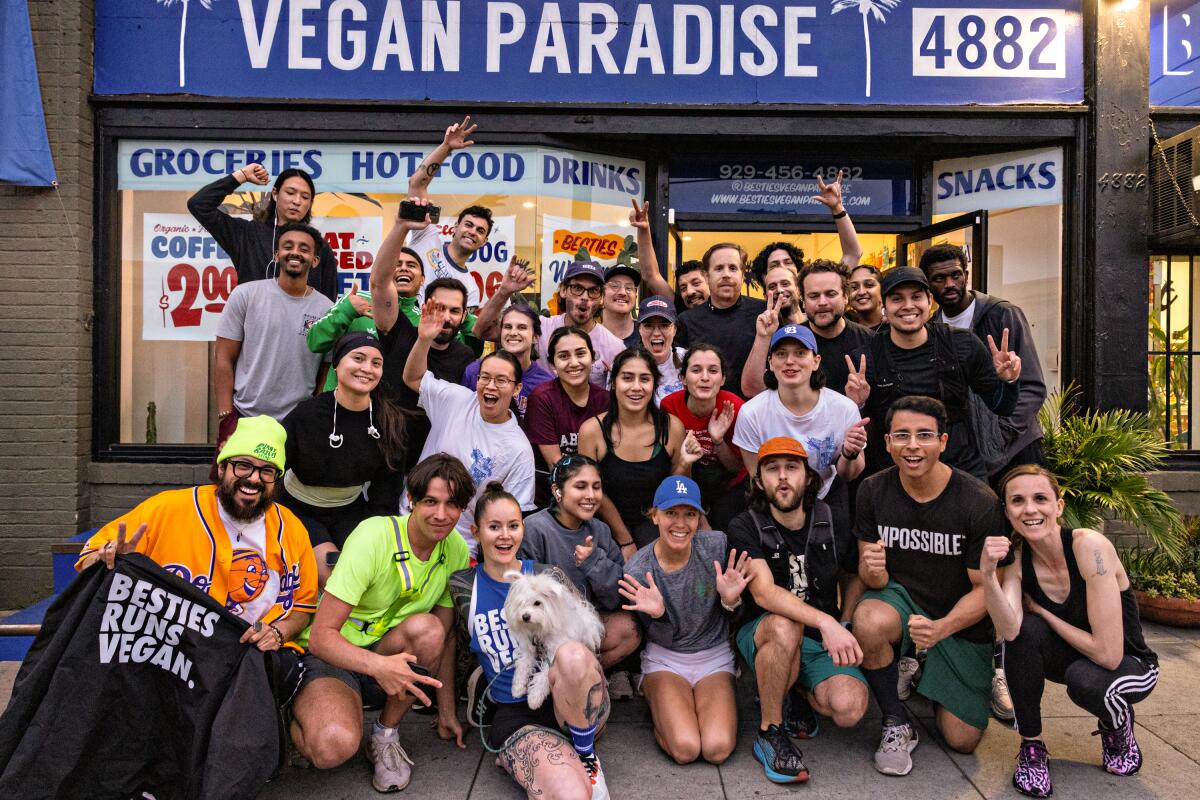
Vegan runners at Besties after their 5K run.
(Jason Armond / Los Angeles Times)
The store gives away soft serve to customers and vendors so readily that some question the business model.
“A friend of mine was like, ‘What’s the perk of them giving away all this stuff for free?’” said Sara Schunck, a member of Besties’ run club. “But the best people come out and you’re looking forward to the ice cream at the end. I’ve met a lot of really cool people.”
Fontana, now sitting on the skateboard-stoop outside the store, pops a vegan sour gummy into his mouth, contemplating the question.
“It’s about spreading the vegan love, paying it forward,” he said.
One vegan ice cream scoop at a time.

Lifestyle
'Wait Wait' for May 25, 2024: With Not My Job guest J. Kenji López-Alt

J. Kenji Lopez-Alt attends the 2023 James Beard Media Awards at Columbia College Chicago in Chicago.
Jeff Schear/Getty Images for The James Beard/Getty Images North America
hide caption
toggle caption
Jeff Schear/Getty Images for The James Beard/Getty Images North America
This week’s show was recorded at the Paramount Theater in Seattle with host Peter Sagal, judge and scorekeeper Bill Kurtis, Not My Job guest J. Kenji López-Alt and panelists Shantira Jackson, Luke Burbank and Jessi Klein. Click the audio link above to hear the whole show.
Who’s Bill This Time
Till Indictment Do We Part, An AI No No, Sleepy Chic
Panel Questions
Not Your Grandma’s Land of 10,000 Lakes
Bluff The Listener
Our panelists tell us three stories about stain-blocking ceiling paint in the news, only one of which is true.
Not My Job: We quiz Serious Eats’ J. Kenji López-Alt on Serious Feet
J. Kenji López-Alt is a food genius. The two-time James Beard Award winner and creator of “The Food Lab” is one of the world’s smartest people when it comes to cooking, but can he survive our game called “Serious Eats, Meet Serious Feets”?
Panel Questions
Caught Red (or Possibly Blue) Handed, The Dog Ate My….What?!?
Limericks
Bill Kurtis reads three news-related limericks: A Study Abroad Souvenir, A Pie Goodbye, Eau de Teen
Lightning Fill In The Blank
All the news we couldn’t fit anywhere else
Predictions
Our panelists predict, after Senator Bob Menendez and Justice Samuel Alito did it, who will blame their spouse next?
Lifestyle
Jax Taylor Hanging Out at Bar with Mystery Woman Amid Brittany Cartwright Split
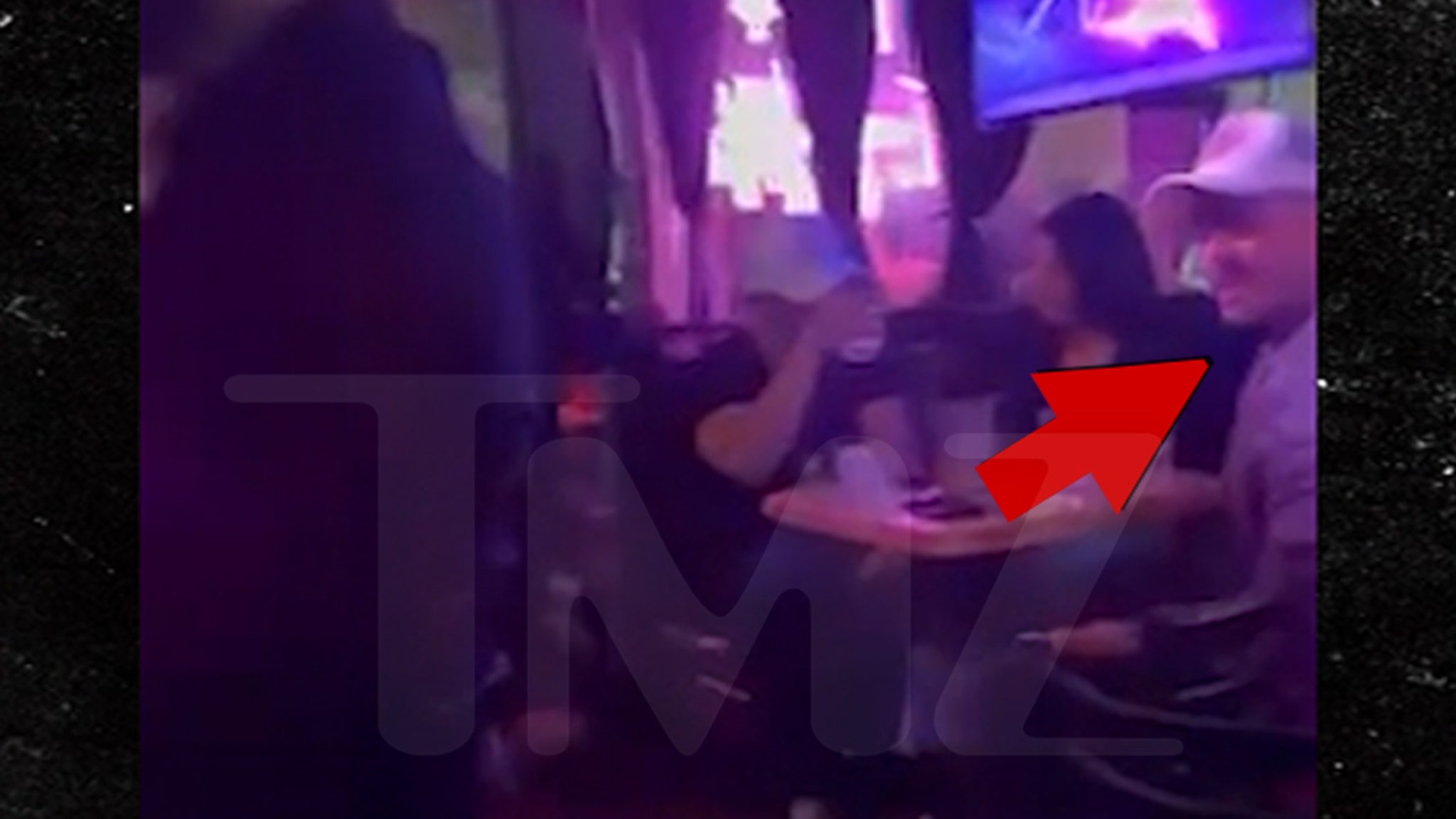
TMZ.com
Jax Taylor might be moving on … hanging out with a mystery woman at a Los Angeles bar — after separating from his wife of nearly five years Brittany Cartwright.
The reality star hit The Oaks Tavern in Sherman Oaks late Friday night with a group of friends — including a woman he seemed to be getting pretty close with.

Check out the clip … JT’s trying to keep a low profile in the cap, but it’s clearly him chatting away with friends and enjoying a couple drinks.
Eyewitnesses say Jax and his lady friend arrived together around 11:30 PM PT Friday night … and, several friends in their party hopped up to perform karaoke at the low-key establishment.
We’re told Jax and the woman left together after about an hour and a half … hitting the road around 1 in the morning. Our sources say there was no major PDA — but, the pair did look pretty comfortable around one another.
The night out comes just a couple months after news broke Jax and his wife were taking some time apart … with the two even living separately.
Bravo
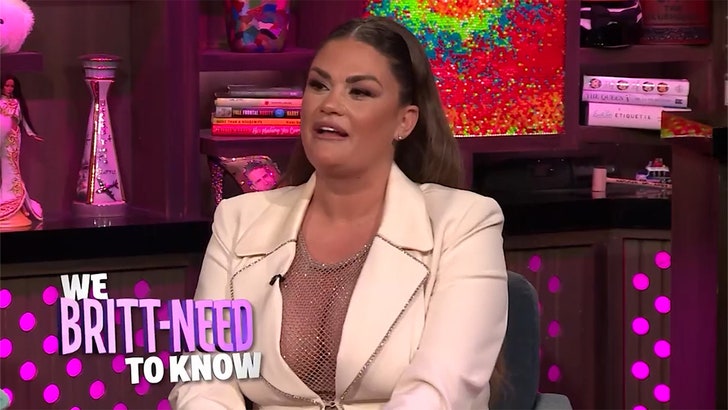
4/2/24
No divorce filing’s come down yet … but, Brittany’s claimed an argument over her hitting the town with “The Valley” costar Kristen Doute made her realize the two needed time apart.
Seems Jax is enjoying himself despite the space. We’ve reached out to his camp about his companion … so far, no word back.
Lifestyle
When Baby Sloth tumbles out of a tree, Mama Sloth comes for him — s l o w l y

Illustrations © 2024 by Brian Cronin/Rocky Pond Books
hide caption
toggle caption
Illustrations © 2024 by Brian Cronin/Rocky Pond Books

Illustrations © 2024 by Brian Cronin/Rocky Pond Books
Doreen and Brian Cronin aren’t related — as far as they know. They first stumbled across each other on Facebook: two Cronins, both working in the world of children’s books — Doreen as an author and Brian as an illustrator — and living in the same city? They should probably get a cup of coffee!
“We decided to meet up. We both live in Brooklyn and we met on a bench in Prospect Park just to chat,” explains Doreen Cronin, “and that was three years ago.”
They didn’t let the perfect meet-cute go to waste — they hit it off, both personally and professionally. Soon, they were dating and working together.
“We’re in it now!” Doreen laughs.
The Cronins admit they were at first a touch apprehensive about working together as a new couple. Brian had never collaborated with an author before. But they couldn’t really help it, says Doreen.
“It’s what we were both doing all day long,” she explains. “We’re always talking about books. We’re always talking about ideas.” Luckily, it’s worked out.
“I really love it,” says Brian. “I think it’s made us stronger.”
Their first picture book together was last year’s Lawrence and Sophia. They quickly followed up with Mama in the Moon, about a baby sloth who falls out of a tree at night and has to wait for his mom to s l o w l y come get him.

Illustrations © 2024 by Brian Cronin/Rocky Pond Books
hide caption
toggle caption
Illustrations © 2024 by Brian Cronin/Rocky Pond Books

Illustrations © 2024 by Brian Cronin/Rocky Pond Books
They got the idea for Mama in the Moon over breakfast — Doreen says they create a lot over coffee and food — and that morning Brian had just read a news story.
“It was a news story about a sloth who had fallen out of a tree,” he says. “It felt real. It is real.” That’s because sloths do, in fact, fall out of trees about once a week for their whole lives. “It kind of wrote itself, really,” Brian says. By the time they left the diner, Doreen already had jotted down some notes and Brian already had some sketches for their second children’s book.
“Baby loved sleeping between his mama and the moon,” Doreen Cronin writes.
“One night, Baby tumbled from the tree. He landed in a soft patch of vines and leaves.
‘Mama, where are you?’ he called.”

Mama in the Moon
Illustrations © 2024 by Brian Cronin/Rocky Pond Books
hide caption
toggle caption
Illustrations © 2024 by Brian Cronin/Rocky Pond Books

Mama in the Moon
Illustrations © 2024 by Brian Cronin/Rocky Pond Books
“We were, like, in tears when we finished it and kind of read it for the first time,” says Doreen.
“I was, actually,” adds Brian.
“We’re both parents, right, so we kind of know that — well, all parents know this — feeling of separation from your child,” explains Doreen. “When they’re waiting for you to come back or they need your comfort, and you can’t always get there.”
In the story, Mama Sloth comforts and reassures Baby Sloth. ‘I’m coming,’ she says. She distracts him, asking him to use all his senses to explore the dark world around him.
“‘Are you close now, Mama,’” the baby sloth calls up from the ground.
“‘I’m closer, Baby. I’m close enough to smell the flowers opening for the night. Can you smell them, too?’”
“Baby watched the bright petals of the flowers bend and fold. He could smell their sweet perfume,” Doreen Cronin writes.

Illustrations © 2024 by Brian Cronin/Rocky Pond Books
hide caption
toggle caption
Illustrations © 2024 by Brian Cronin/Rocky Pond Books

Illustrations © 2024 by Brian Cronin/Rocky Pond Books
The tenderness of the mama sloth to her baby sloth really comes through in Brian’s art, says Doreen. “I’ve seen the art so many times. I can still feel her love and her comfort and her calm.”
Brian Cronin says his process for creating art is very simple — he doesn’t have one. “Every time I start something, it’s like a kind of a beginning.” For Mama in the Moon, he started with pencil sketches. Then he used poster paints and a marker for the trees to create a broken-line effect.
“I wanted it to feel like there was a human behind the thing,” he says.
One of the challenges in illustrating this story is that it takes place at night —how do you add light so it doesn’t feel too scary and dark? “The moon,” Brian says. The bright, fuzzy orb (fuzzy to mimic the fur on the sloths) is on most of the pages, or else lighting up the night sky. The baby sloth is a bright salmon pink amidst the dark foliage. And when Mama Sloth points out all the things Baby Sloth can smell (like the flowers opening for the night), and hear (like the worms wriggling in the fallen leaves), and feel (like the flutter of moths dancing in the air), they come to life against the charcoal pages in bright, almost neon, yellows, pinks, blues and greens.
Brian Cronin says he hopes the book helps kids fall asleep.
“The reason I wanted to do the dark pages was so that they’re in bed and the mommy and daddy, or whoever it is reading the book, they’re not disturbed by the text or the brightness of anything, and they can just kind of soak it up,” he explains. “It’s fairly relaxing, I think.”
Doreen Cronin agrees.
“I think it’s comfort, safety, and I think it puts us in kind of a quiet space,” she says, “and I hope it does, out in the world. Give us some quiet space. Give kids a quiet space.”

Illustrations © 2024 by Brian Cronin/Rocky Pond Books
hide caption
toggle caption
Illustrations © 2024 by Brian Cronin/Rocky Pond Books

Illustrations © 2024 by Brian Cronin/Rocky Pond Books
-

 News1 week ago
News1 week agoHow a migrant aid group got caught up in a right-wing social media thread : Consider This from NPR
-

 Movie Reviews1 week ago
Movie Reviews1 week agoIs Coppola’s $120M ‘Megalopolis’ ‘bafflingly shallow’ or ‘remarkably sincere’? Critics can’t tell
-

 Movie Reviews1 week ago
Movie Reviews1 week agoGuruvayoor Ambalanadayil movie review: This Prithviraj Sukumaran, Basil Joseph-starrer is a total laugh riot
-

 World1 week ago
World1 week agoTaiwan grapples with divisive history as new president prepares for power
-

 Politics1 week ago
Politics1 week agoSouthern border migrant encounters decrease slightly but gotaways still surge under Biden
-

 World1 week ago
World1 week agoSlovakia PM Robert Fico in ‘very serious’ condition after being shot
-

 News1 week ago
News1 week agoThe NFL responds after a player urges female college graduates to become homemakers
-

 Crypto1 week ago
Crypto1 week agoVoice of Web3 by Coingape : Showcasing India’s Cryptocurrency Potential



/cloudfront-us-east-1.images.arcpublishing.com/pmn/HG5RDNEURJEMLISEIXSGF6MF2A.jpg)

